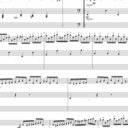[Progression of silent cerebral infarction in Japanese: a hospital-based study].
Kľúčové slová
Abstrakt
Little is known about the risk factors for progression of silent cerebral infarction (SCI). We evaluated the 5-year change in high signal intensity on T2-weighted MR images of the brain in 50 asymptomatic patients with SCI. SCI progression was evaluated by the sum of the high intensity score (HIS) and the number of new lesions found on reexamination. Progression of SCI was seen in 19 patients (38%) on the 5-year follow-up examination. The baseline HIS in the whole brain was 8.02 +/- 6.93 and the follow-up HIS was 8.7 +/- 7.16 (p < 0.001). SCI progression was frequently seen in the corona radiata (p < 0.02 or < 0.05) or posterior periventricular white matter (p < 0.05). Patients with poor control of hypertension (> 160/95 mmHg) have a higher prevalence of SCI progression (9/12 (75%) vs. 10/38 (26.3%); OR = 8.4, p < 0.005) than the patients with effective control of BP (< or = 160/95 mmHg). The progression group showed a significantly higher baseline-HIS in the whole brain than the nonprogressing group (9.7 +/- 5.6 vs. 7 +/- 7.5; p < 0.05). Neither age percentages of alcohol drinkers, male sex, current smokers, hypertensives, hyperuricemia, hypercholesterolemia, diabetes, obesity, left ventricular hypertrophy, ischemic heart disease, nor differences in the controls of diabetes and hypercholesterolemia during the study were different between the progressing and the nonprogressing groups. Our data showed that poor control of high blood pressure and the degree of T2 high intensity in the baseline were strong predictors of SCI progression.


